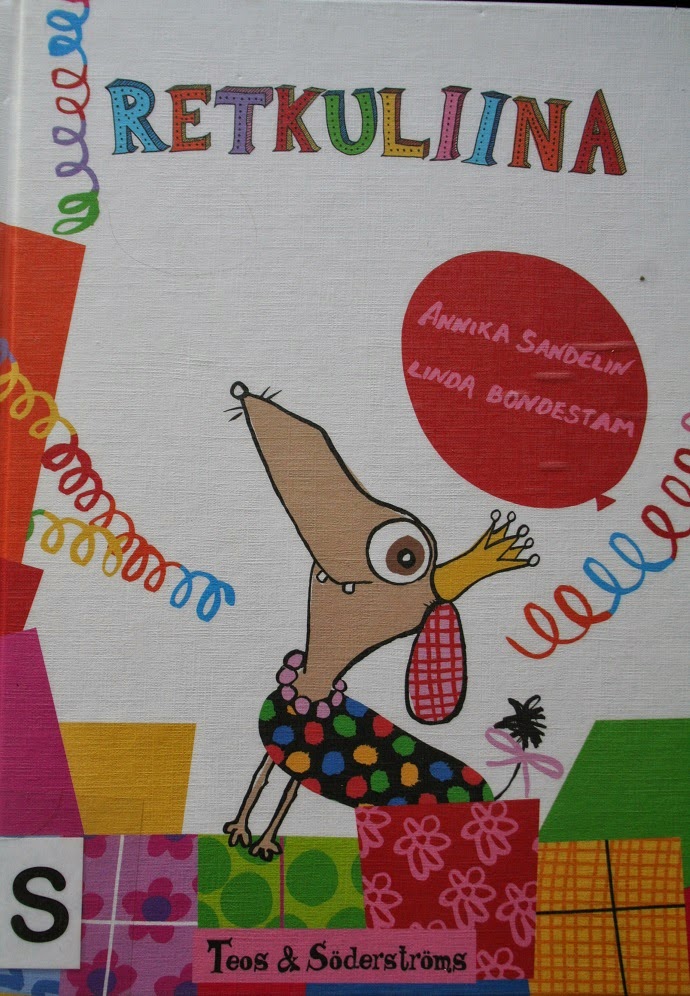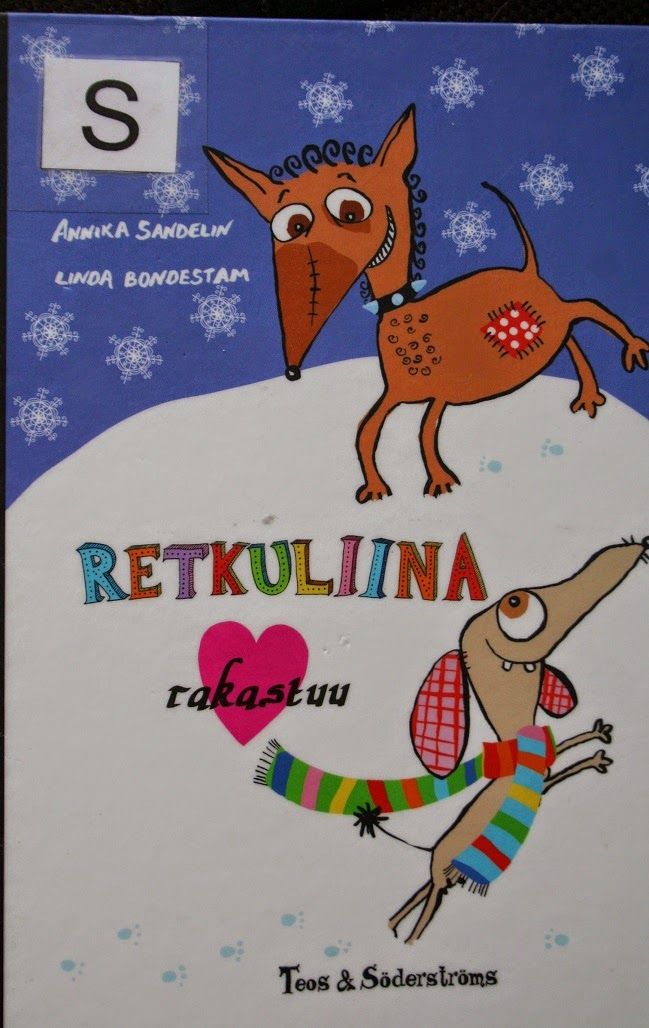 Annika Sandelin 2010: Businnan
Annika Sandelin 2010: Businnan illustrated by Linda Bondestam
Annika Sandelin 2011: Businnan blir kär
illustrated by Linda Bondestam
Ragline (Businnan/Retkuliina)
Ragline is a plush dog that has been thrown away, but luckily Petra has taken her in. Ragline (Businnan in Swedish, Retkuliina in Finnish) is very selfis and high maintenance plush toy and she has to find her place among the other toys and where nobody appreciates her need to be the center of attention. The others are soon ready to throw her back on the street again.
 |
| Ragline enjoys the swings |
Lessons about accepting others the way they are, but also not being a dive.
 Ragline falls in love (Businnan blir kär)
Ragline falls in love (Businnan blir kär)
Ragline meets Rackham a very charming boy plush dog and together they run away.While Ragline is romacing with Rackham, Petra is very sad because she left. Petra's other toys at first are glad but then start to miss her as well. The house is boring without Ragline. Ragline soon sees that life isn't as rosy as she thought it would be and returns home a lot fatter. It turns out she is going to have a puppy.
The second version reminds me of Disney's Lady and the Tramp, but with a Kaurismäki twist: the male always leaves! That is too rough. I prefer the Disney version, but the perspective is good and so is the lesson: beware of these charmers!
 |
| To really charm Ragline, Rackham takes her to the garden. |


















